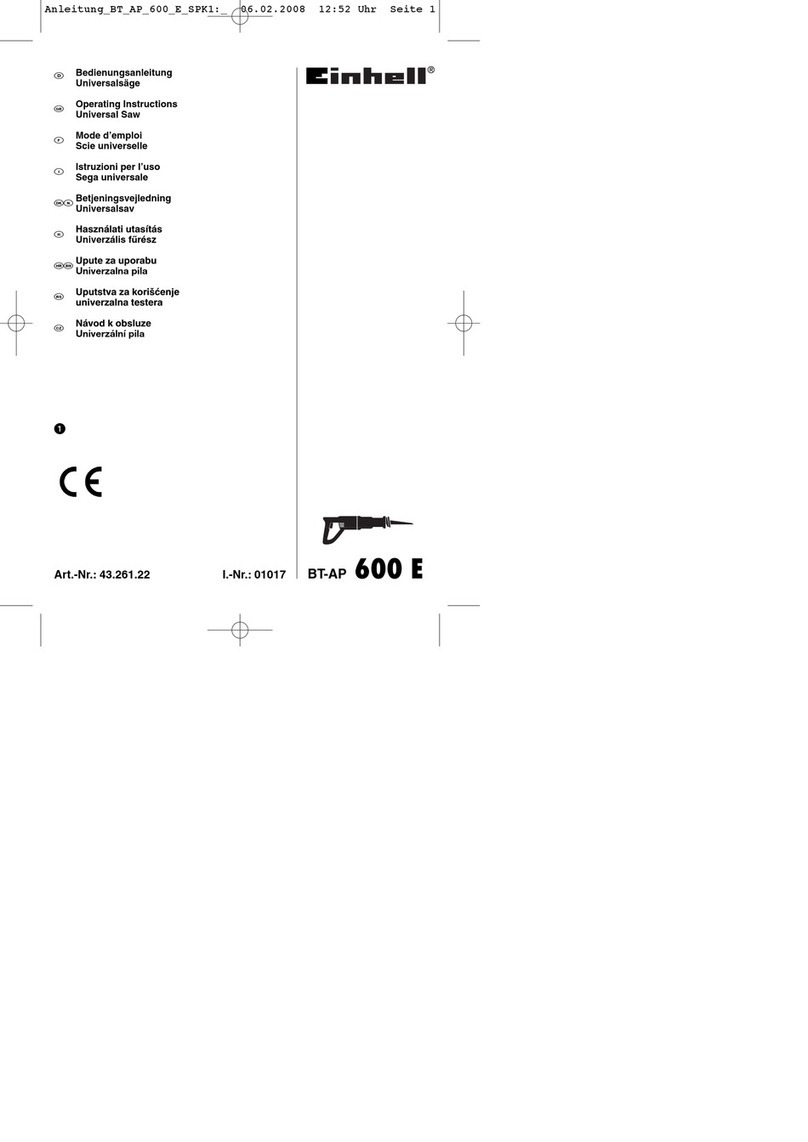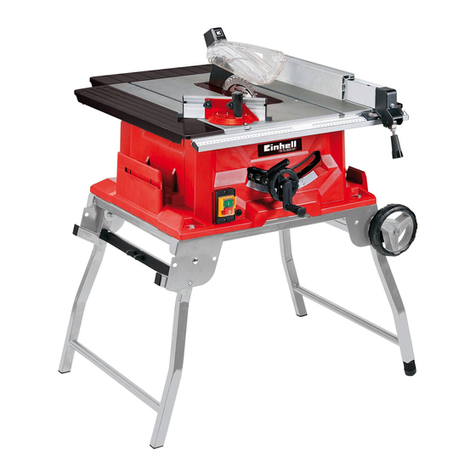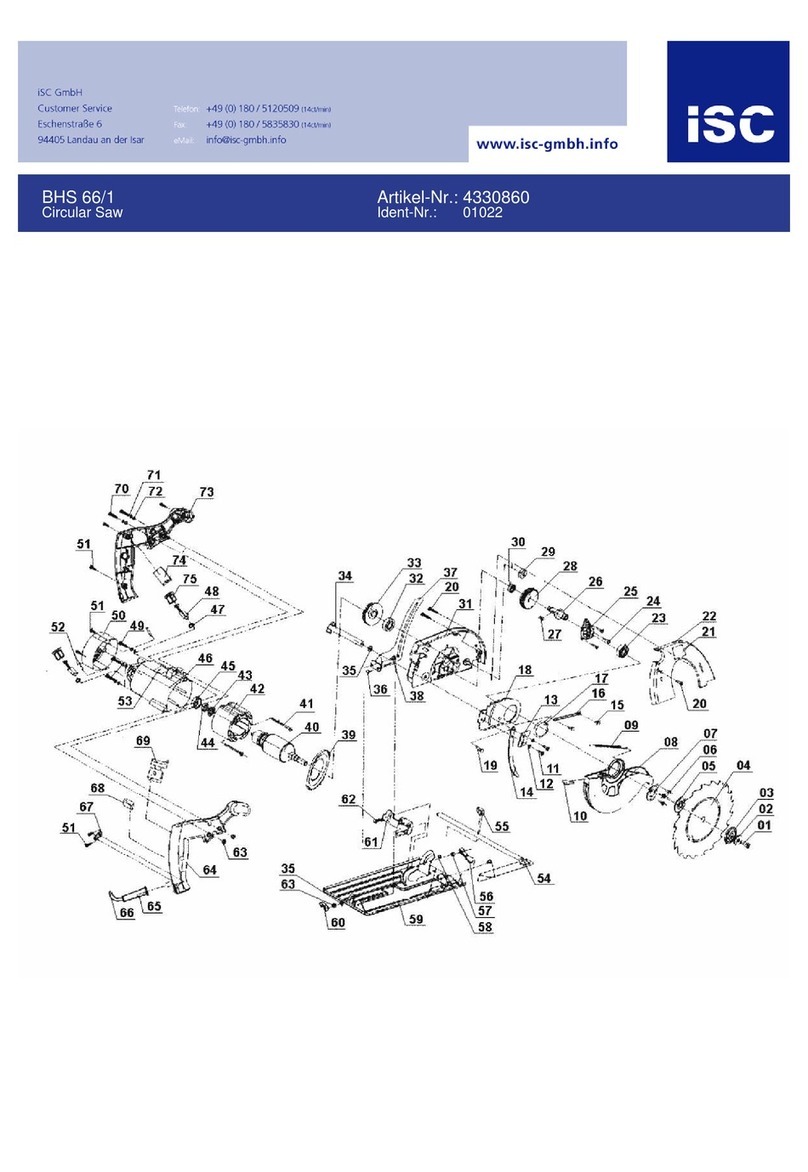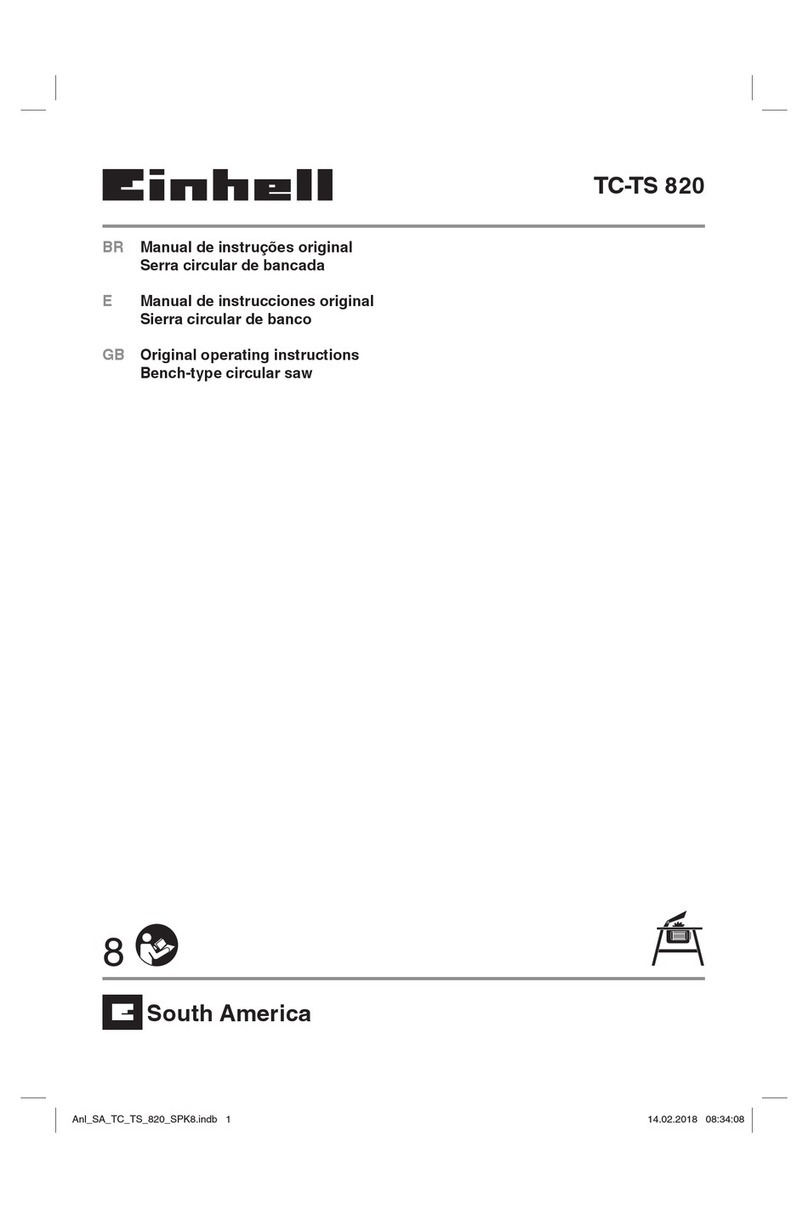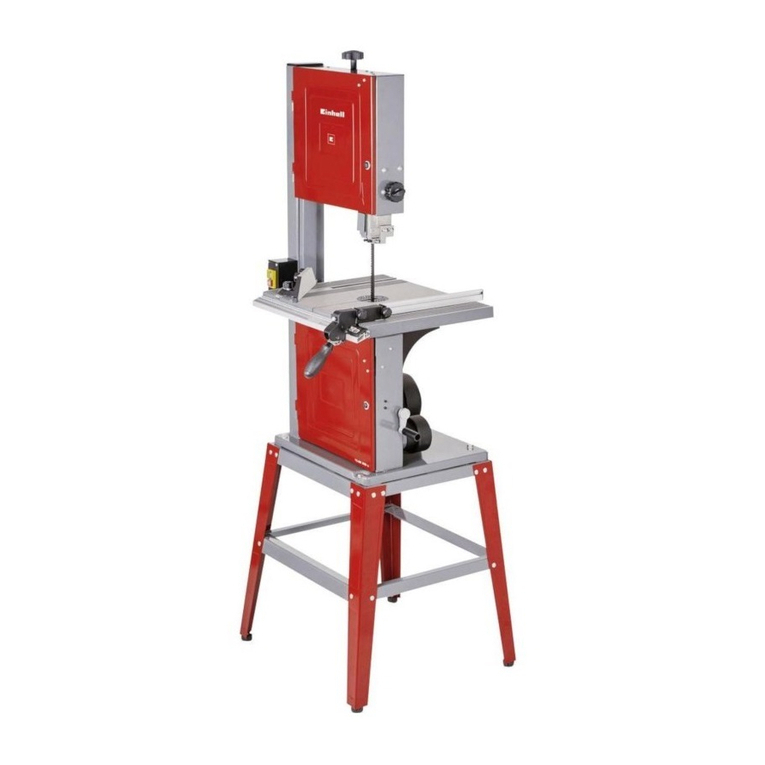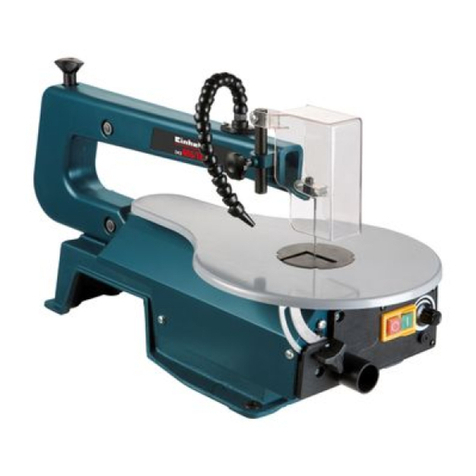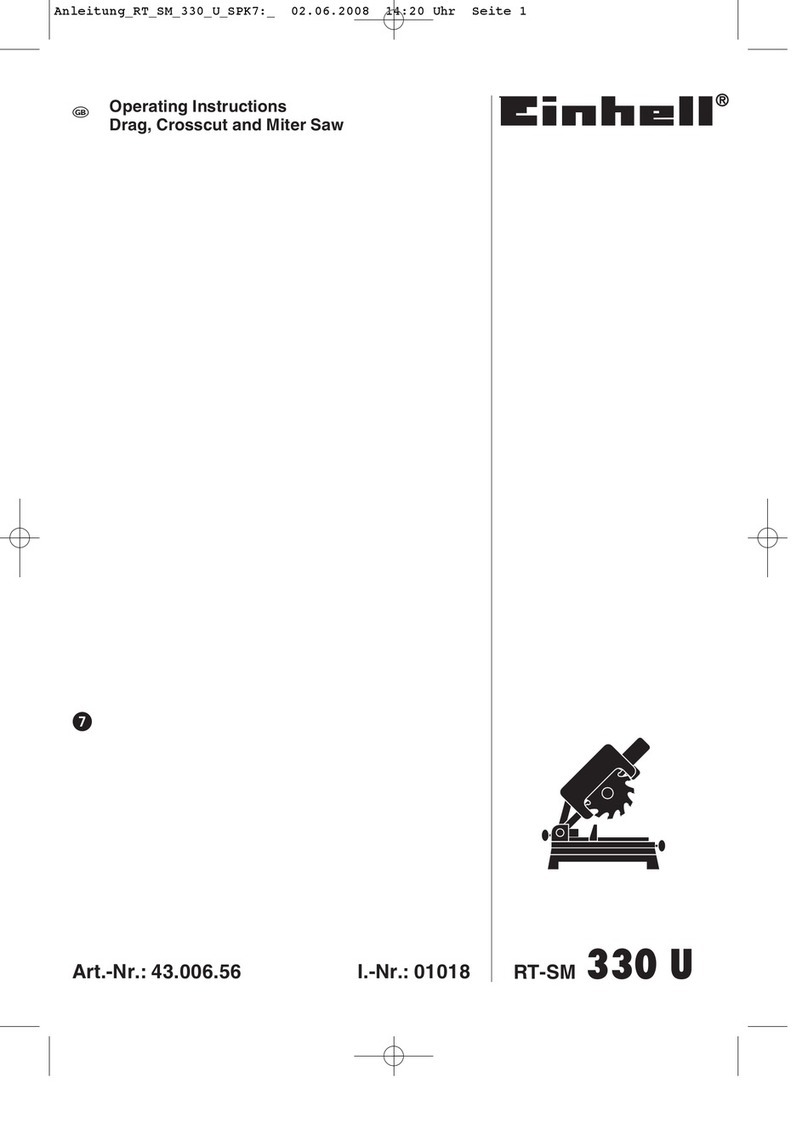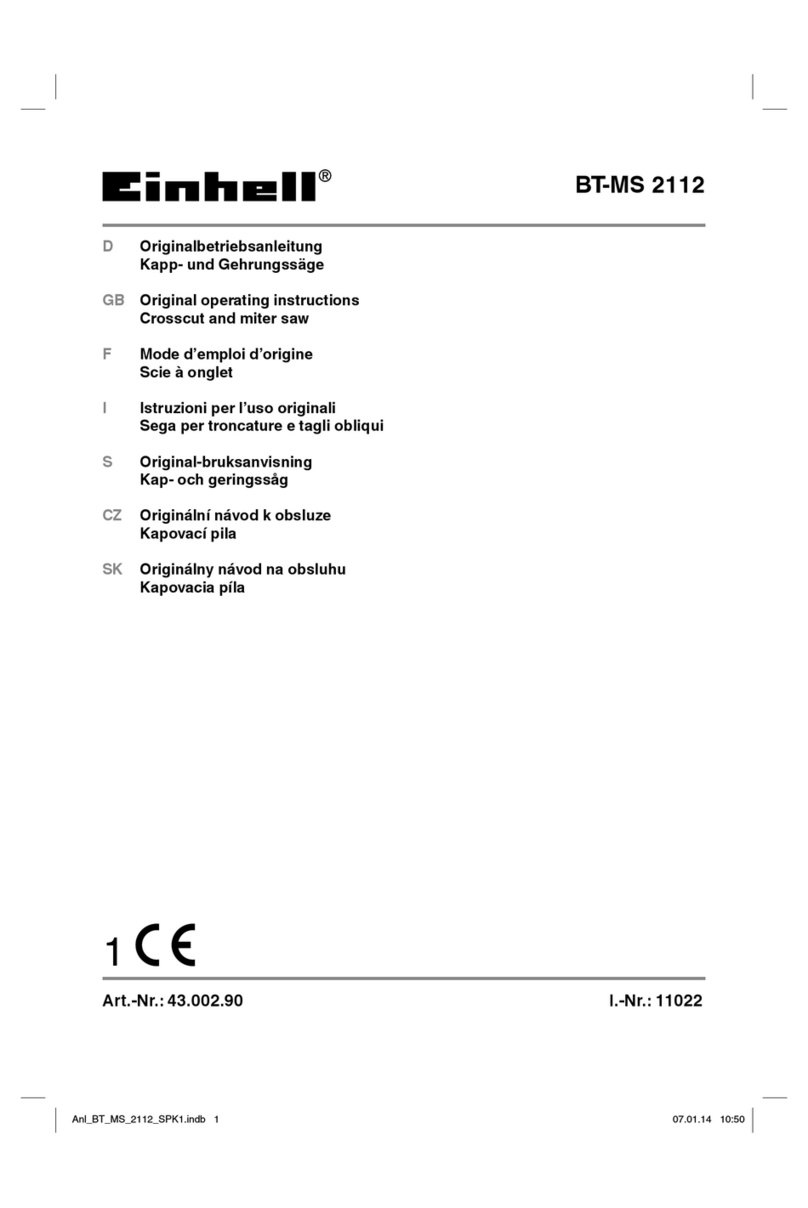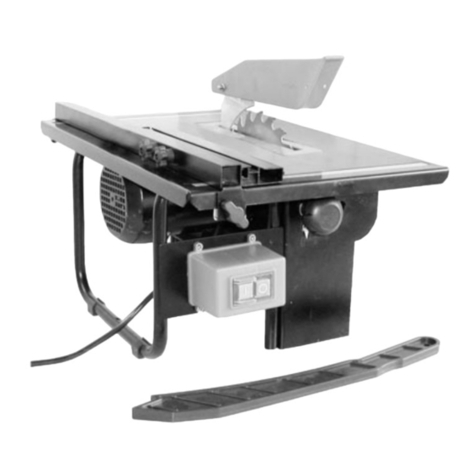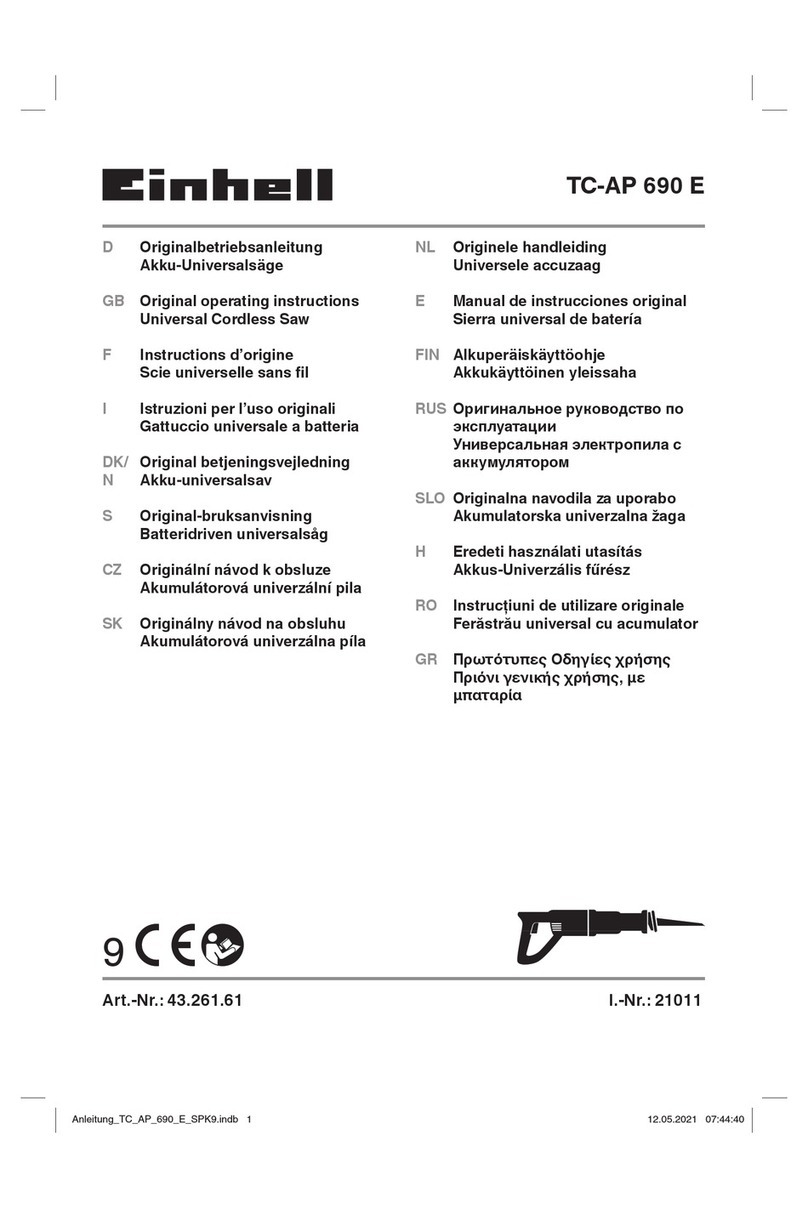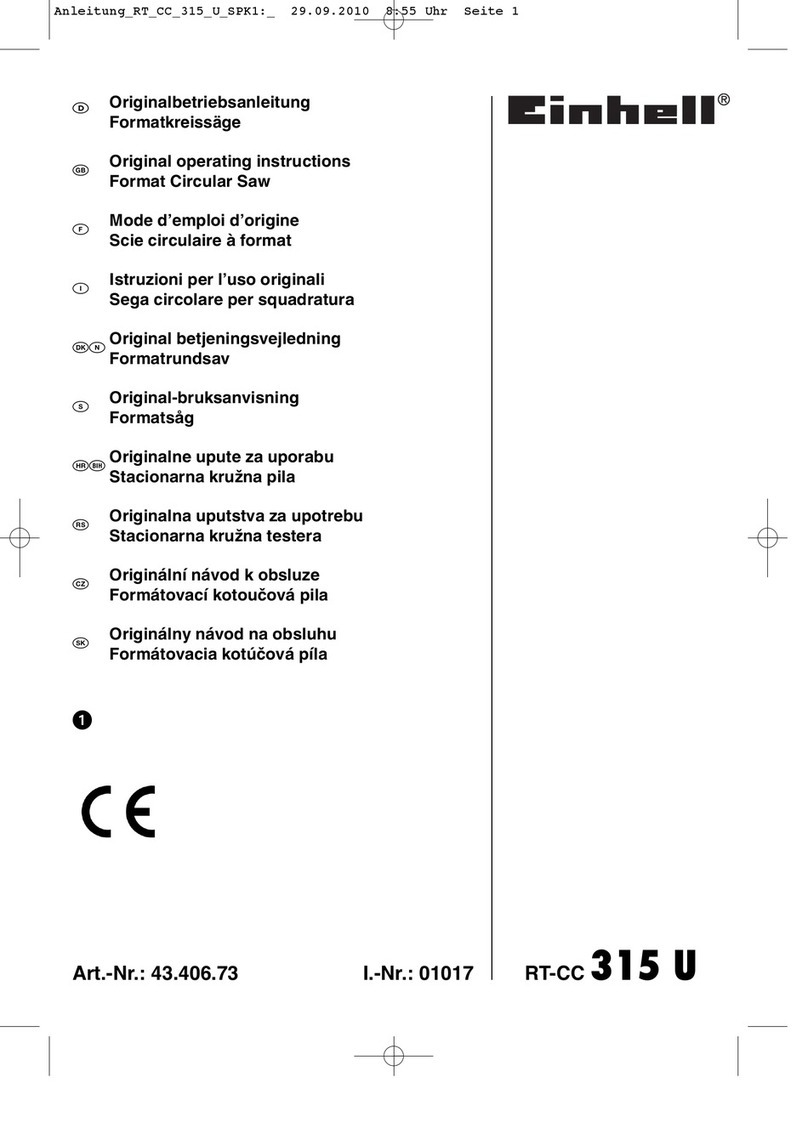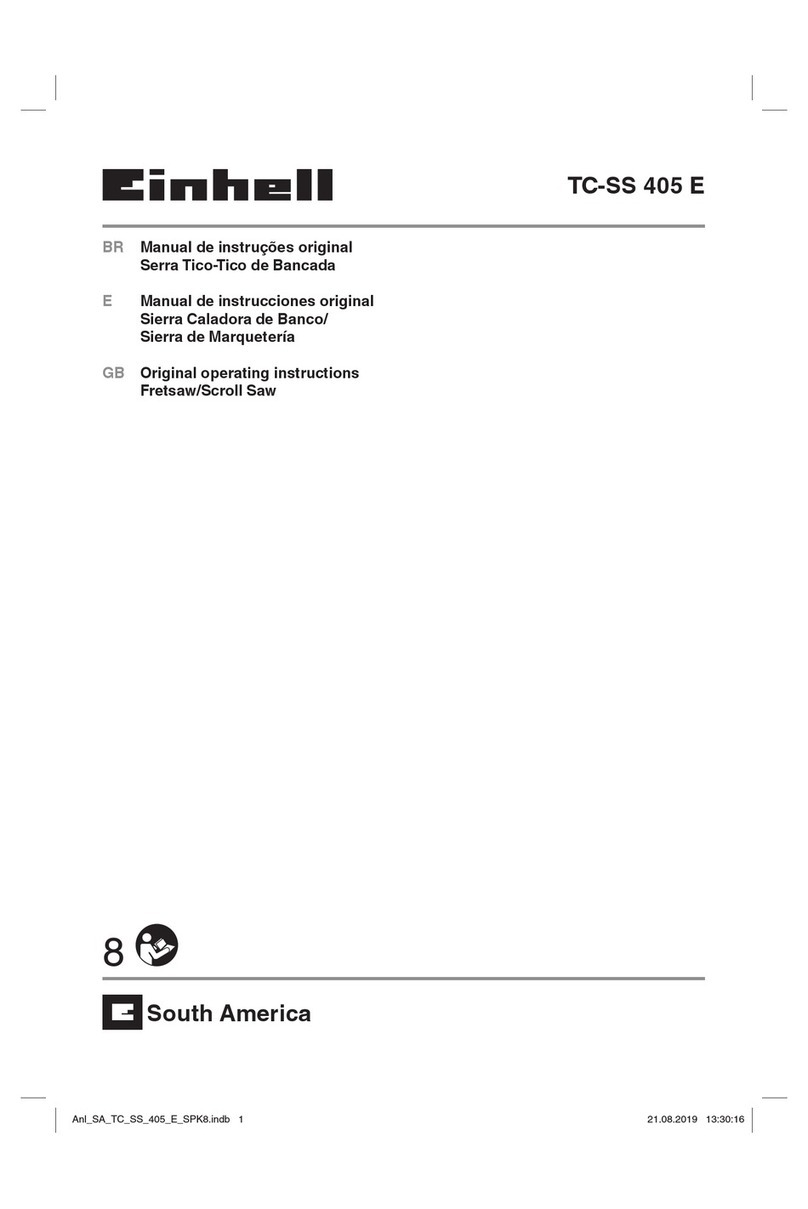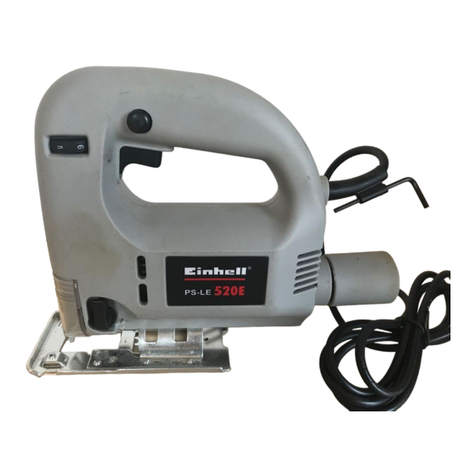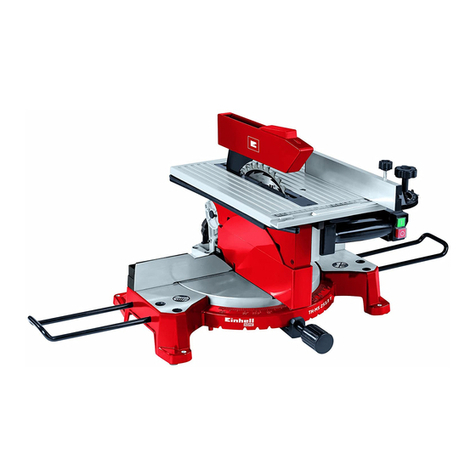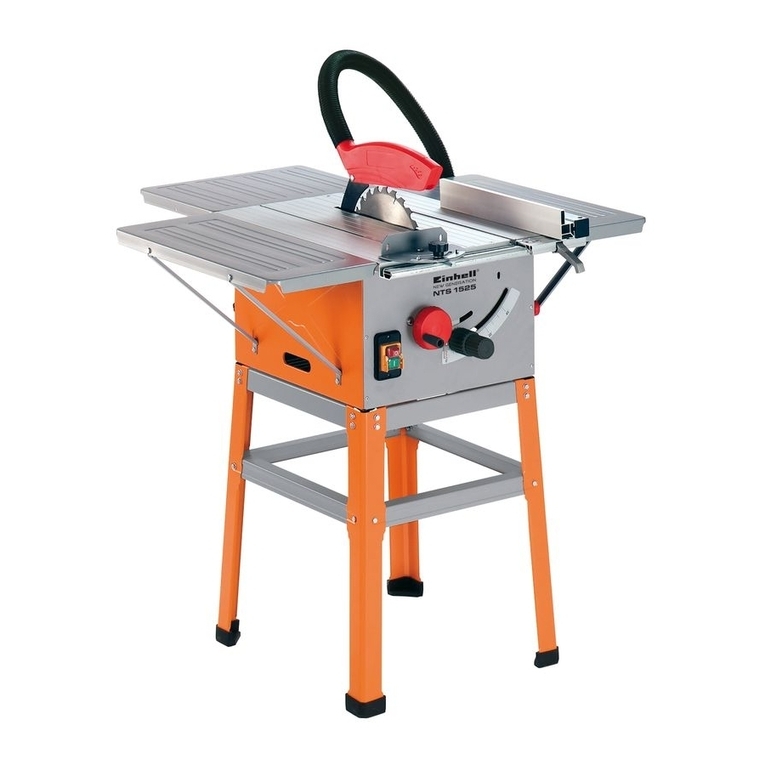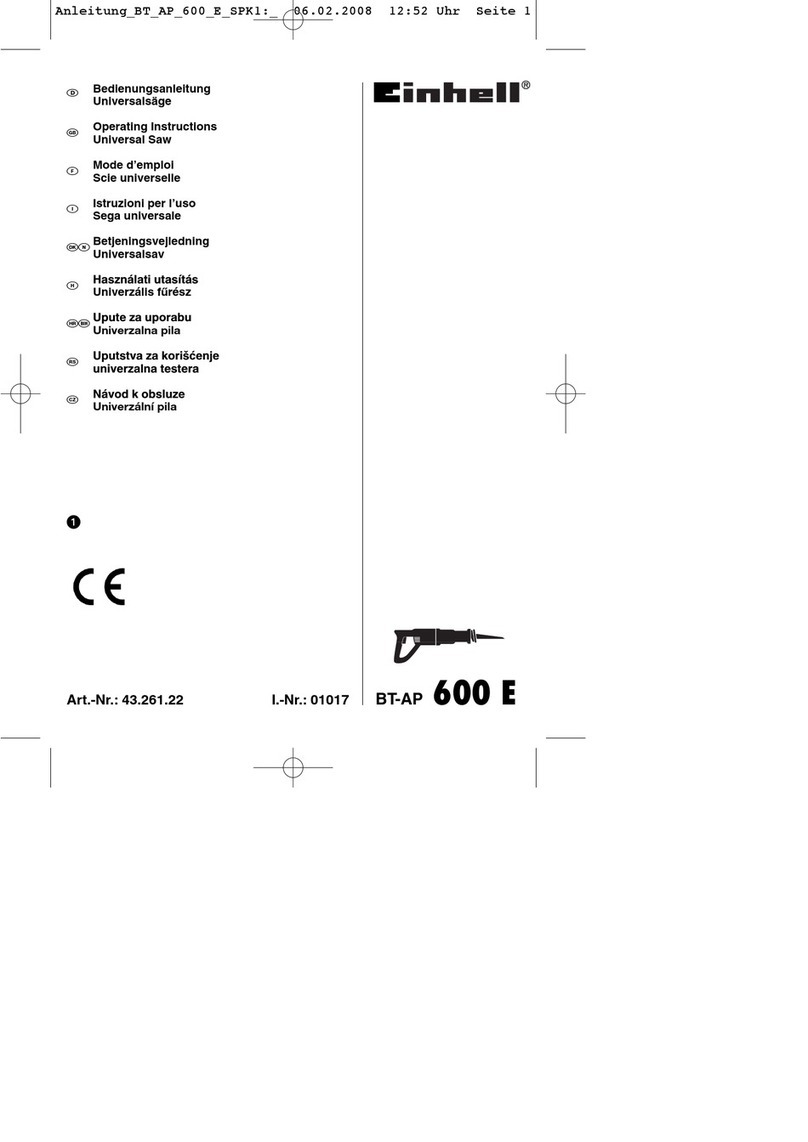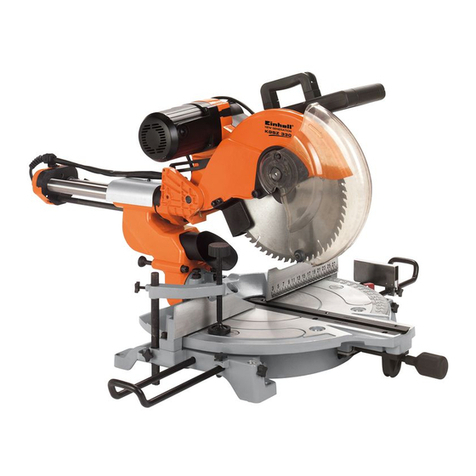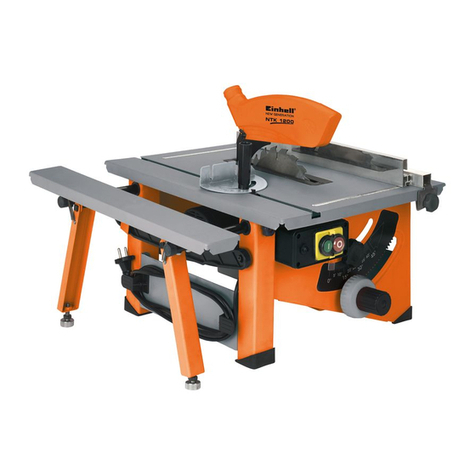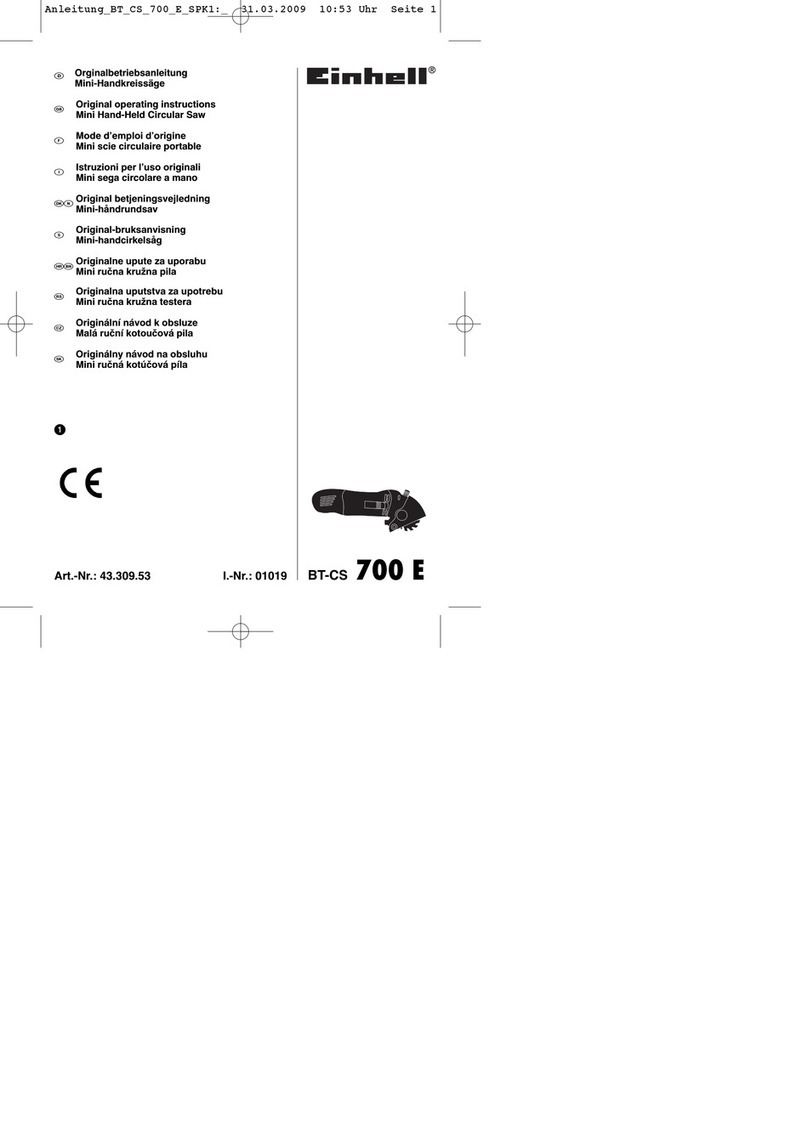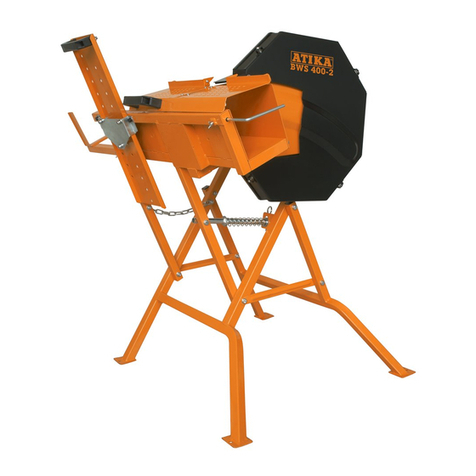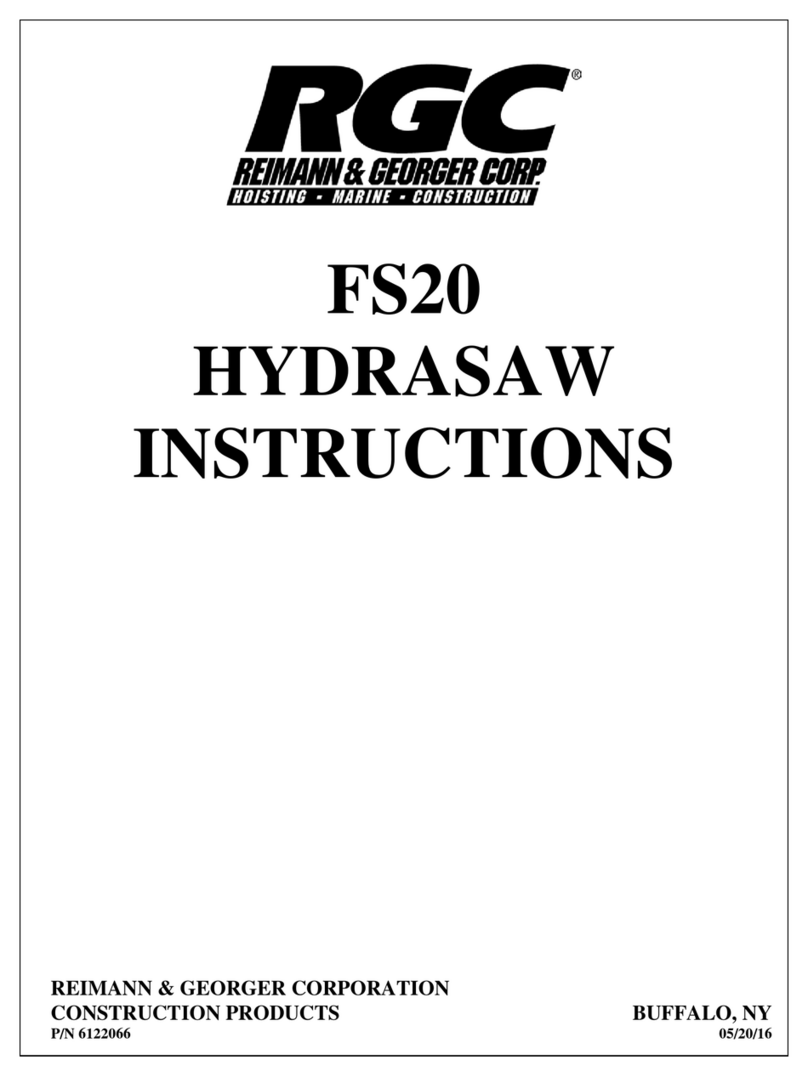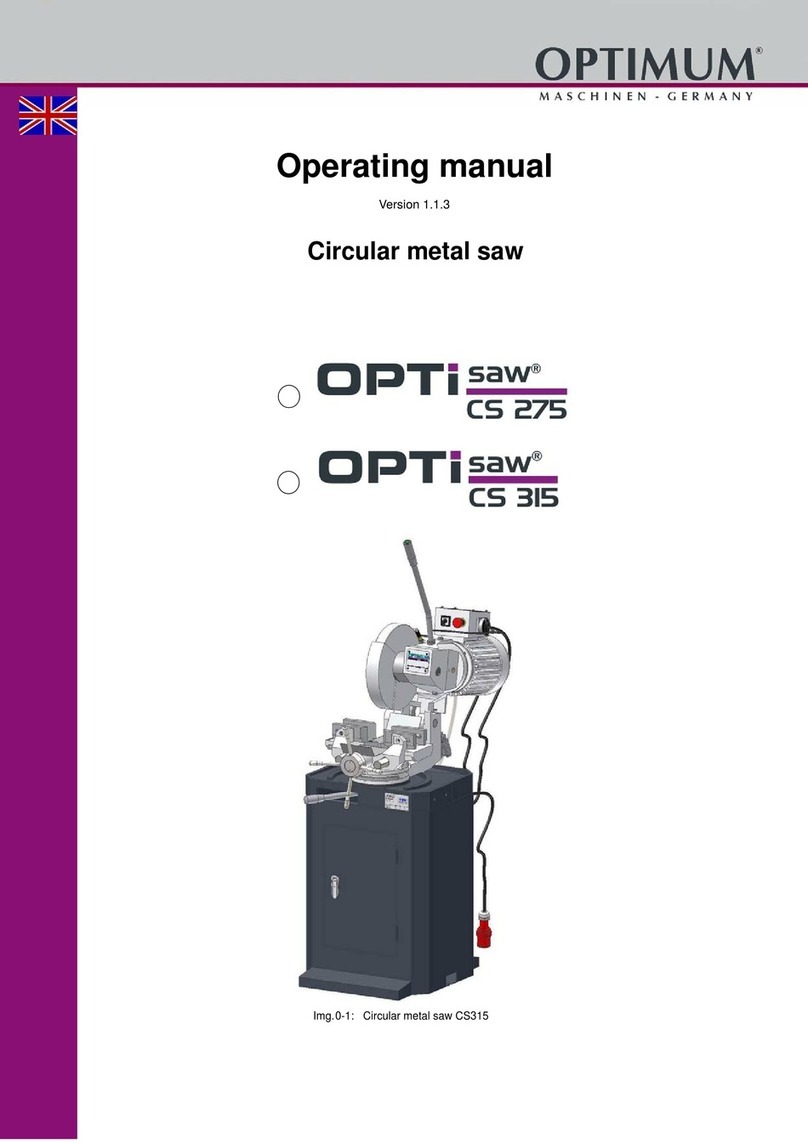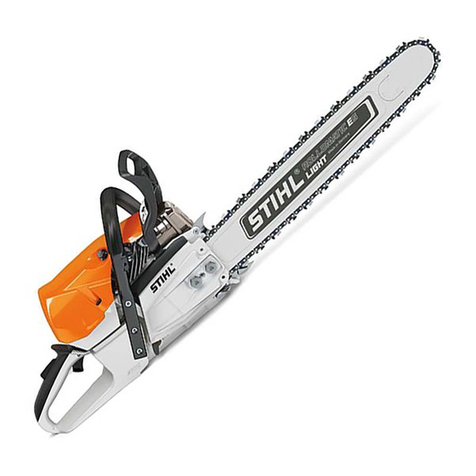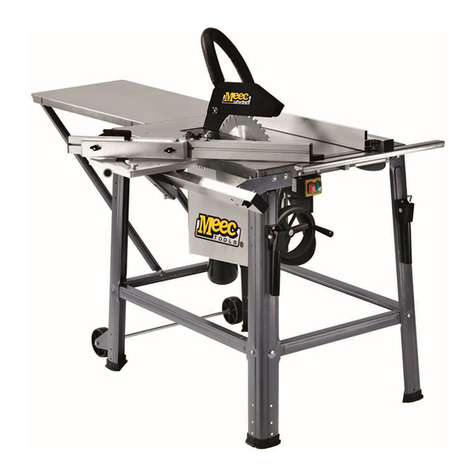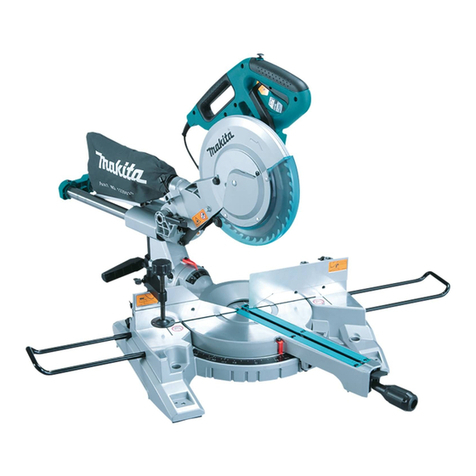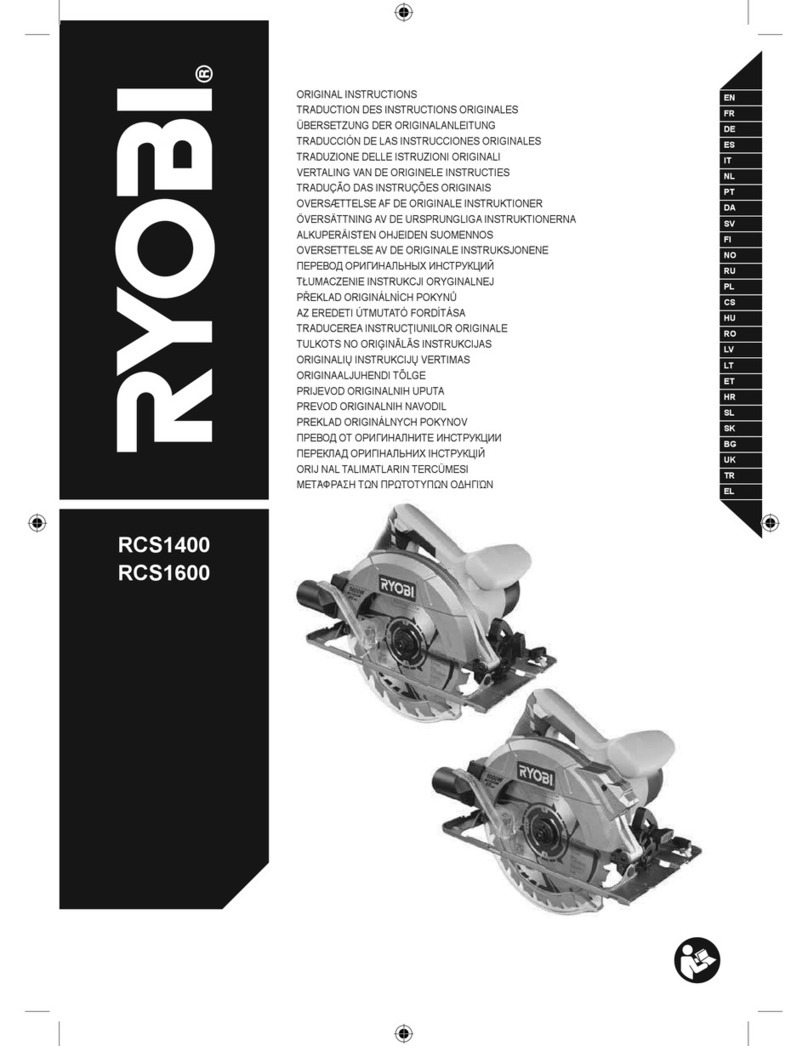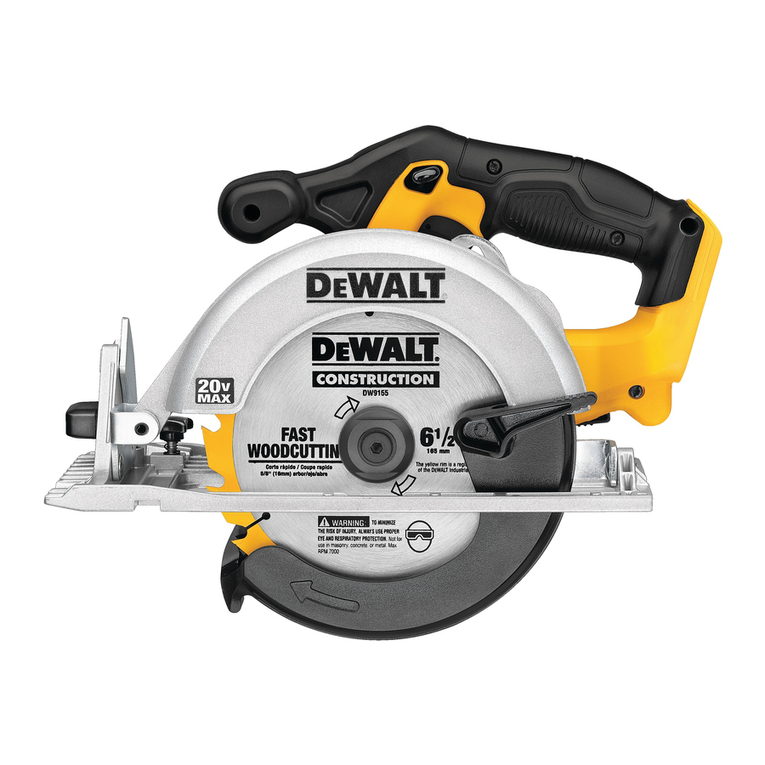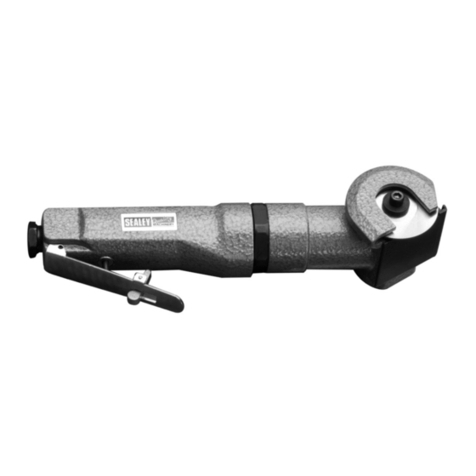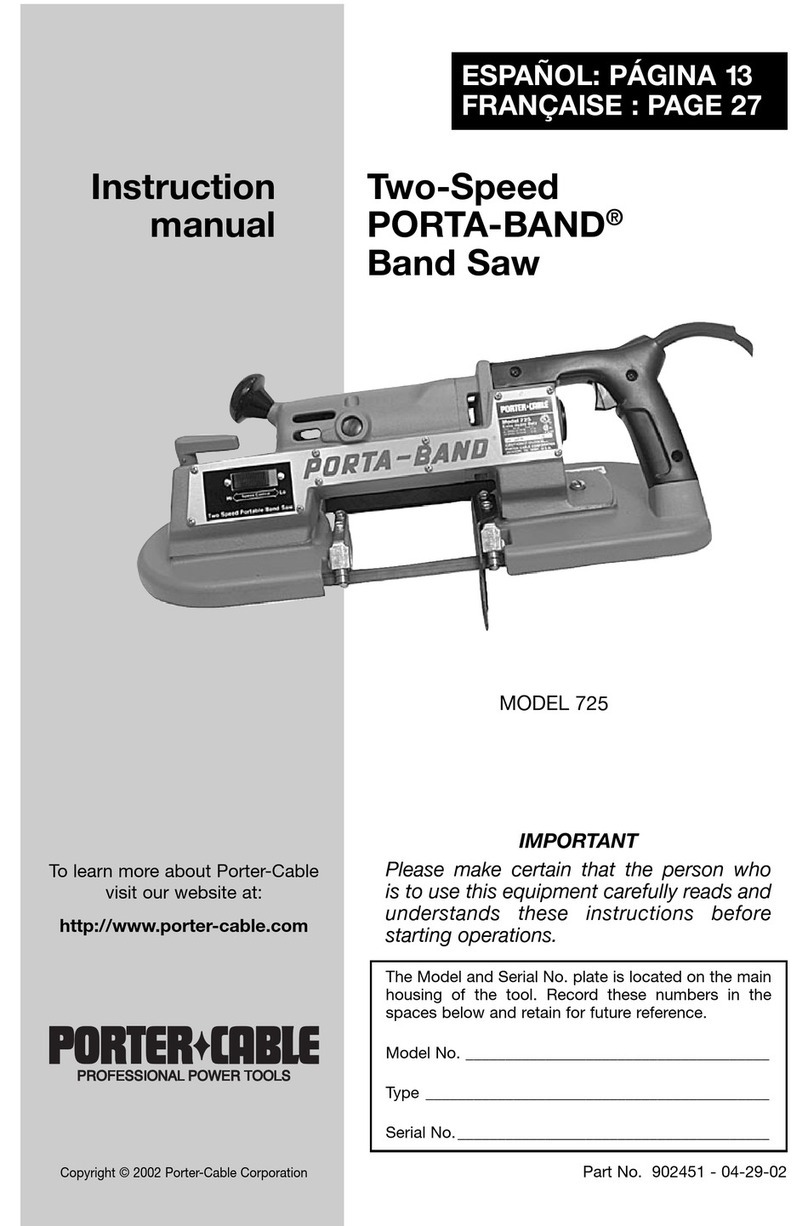10
Darüber hinaus sind die geltenden Unfallverhütungs-
vorschriften genauestens einzuhalten.
Sonstige allgemeine Regeln in arbeitsmedizinischen
und sicherheitstechnischen Bereichen sind zu
beachten.
Veränderungen an der Maschine schließen eine
Haftung des Herstellers und daraus entstehende
Schäden gänzlich aus.
Trotz bestimmungsmäßiger Verwendung können
bestimmte Restrisikofaktoren nicht vollständig
ausgeräumt werden. Bedingt durch Konstruktion und
Aufbau der Maschine können folgende Punkte
auftreten:
nBerührung des Sägeblattes im nicht abge-
decktem Sägebereich.
nEingreifen in das laufende Sägeblatt
(Schnittverletzung)
nRückschlag von Werkstücken und
Werkstückteilen.
nSägeblattbrüche.
nHerausschleudern von fehlerhaften Hartmetall-
teilen des Sägeblattes.
nGehörschäden bei Nichtverwendung des nötigen
Gehörschutzes.
nGesundheitsschädliche Emissionen von Holz-
stäuben bei Verwendung in geschlossenen
Räumen.
Bitte beachten Sie, dass unsere Geräte bestim-
mungsgemäß nicht für den gewerblichen, handwerk-
lichen oder industriellen Einsatz konstruiert wurden.
Wir übernehmen keine Gewährleistung, wenn das
Gerät in Gewerbe-, Handwerks- oder Industriebe-
trieben sowie bei gleichzusetzenden Tätigkeiten ein-
gesetzt wird.
5. Technische Daten
Wechselstrommotor 230V ~ 50 Hz
Leistung 1800 Watt
Betriebsart S1
Leerlaufdrehzahl n04500 min-1
Hartmetallsägeblatt ø 250 x ø 30 x 2,8 mm
Anzahl der Zähne 36
Absauganschluß ø 35 mm
Standfläche 490 x 318 mm
Gewicht 13,5 kg
Als Tischsäge:
Sägetisch 416 x 352 mm
Schnitttiefe max. 40 mm
Größter Querschitt des Werkstückes 15,5 x 40 mm
Mindestgröße des Werkstückes 30 x 10 x 100 mm
Parallelanschlag schwenkbar -45° bis + 45°
Als Kappsäge:
Schwenkbereich -45° / 0° / +45°
Gehrungsschnitt 0° bis 45° nach links
Sägebreite bei 90° 130 x 75 mm
Sägebreite bei 45° 120 x 50 mm
Sägebreite bei 2 x 45°
(Doppelgehrungsschnitt) 70 x 35 mm
Mindestgröße des Werkstückes 50 x 10 x 100 mm
Geräusch und Vibration
Die Geräusch- und Vibrationswerte wurden entspre-
chend EN 61029 ermittelt.
Schalldruckpegel LpA 93 dB(A)
Unsicherheit KpA 3 dB
Schallleistungspegel LWA 106 dB(A)
Unsicherheit KWA 3 dB
Tragen Sie einen Gehörschutz.
Die Einwirkung von Lärm kann Gehörverlust bewir-
ken.
Schwingungsgesamtwerte (Vektorsumme dreier
Richtungen) ermittelt entsprechend EN 61029.
Schwingungsemissionswert ah= 2,02 m/s2
Unsicherheit K = 1,5 m/s2
Warnung!
Der angegebene Schwingungsemissionswert ist nach
einem genormten Prüfverfahren gemessen worden
und kann sich, abhängig von der Art und Weise, in
der das Elektrowerkzeug verwendet wird, ändern
und in Ausnahmefällen über dem angegebenen
Wert liegen.
Der angegebene Schwingungsemissionswert kann
zum Vergleich eines Elektrowerkzeuges mit einem
anderen verwendet werden.
Der angegebene Schwingungsemissionswert kann
auch zu einer einleitenden Einschätzung der
Beeinträchtigung verwendet werden.
D
